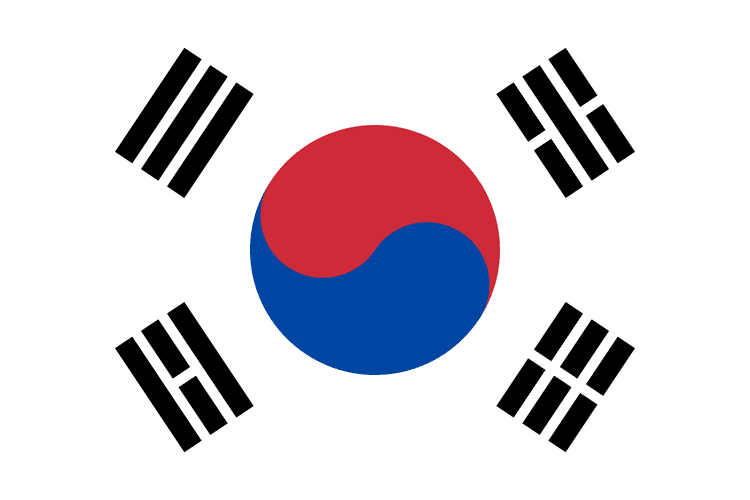Anniversaries December 23 | Type Coast guard | |
 | ||
Active December 1953 – November 2014 (as 해양경찰청)November 2014 – (as current) Size 10,095 personnel292 ships, 23 aircraft(2011) Part of Ministry of Public Safety and Security (2014~ )Ministry of Maritime Affairs and Fisheries (1996~2014)Korean National Police Agency (1953~1996) | ||
The Korea Coast Guard (KCG; Korean: 해양경비안전본부; Hanja: 海洋警備安全本部, Revised Romanization: Haeyang-gyeongbi-anjeon-bonbu, literally Maritime Security and Safety Headquarters) is a sub-agency responsible for maritime safety and control off the coast of South Korea. On November 19, 2014, the previous Korea Coast Guard (Korean: 해양경찰청; Hanja: 海洋警察廳, Revised Romanization: Haeyang-gyeongchal-cheong, literally Maritime Police Agency) was disbanded and its main responsibilities transferred to the newly formed Ministry of Public Safety and Security. The previous KCG was an external branch of Ministry of Maritime Affairs and Fisheries in peacetime.
Contents
- History
- Disestablishment
- Goals
- Main Duties
- Aircraft
- List of ships of the Republic of Korea Coast Guard
- Charter of the Republic of Korea Coast Guard
- Command
- Fleet
- References
The KCG has its headquarters in Songdodong, Incheon, and has hundreds of smaller operating stations along the coastline of the Korean Peninsula. It operates 4 classes of heavy vessels (over 1000 tons), 3 classes of medium vessels (over 250 tons), and 3 classes of light vessels (speedboats over 30 tons). The KCG also uses several types of 'special purpose watercraft', such as firefighting vessels, barges, high speed scout boats, light patrols, and amphibious hovercraft. The KCG aviation unit fields 6 fixed-wing aircraft and 16 rotary-wing aircraft. The Coast Guard also had its own asymmetric warfare unit, the 'Korean Coast Guard Special Operation Unit'.
History
The Coast Guard Authority was formed on 23 December 1953 in Busan, at the same time a Maritime Police Unit was also established as part of the National Police Agency. In October 1962, new bases were established in Incheon, Yeosu, Pohang, and Kunsan. In February 1963, the aviation unit of the KCG closed, though it reopened in the 80's. From 1980 onwards the KCG greatly expanded its fleet, and in August 1991 the Police Unit was renamed the Korea National Maritime Police Agency. In 2007 the Korea National Maritime Police Agency was integrated into the Coast Guard. In the early 21st century, the fleet expanded to include various vessels of over 3,000 tons, and as of January 2002, the 'Korean Coast Guard Special Operation Unit' was officially formed. In the May 2008, the "Search & Rescue Maintenance Unit" was newly constructed, and as of late 2008, various sub-agencies changed infrastructural composition. Before its disestablishment the Korean Coast Guard had planned to field more vessels over 5000 tons by 2015, and to significantly expand its asymmetric warfare force through encouraging participation from other police branches.
Disestablishment
On May 18, 2014, President Park Geun-hye announced South Korea's "plans to break up its coastguard" after failing to respond well during the MV Sewol ferry disaster. According to Park, "investigation and information roles would be transferred to the South Korea National Police while the rescue and salvage operation and ocean security roles would be transferred to the Department for National Safety, not to be confused with the Korean Ministry of Security and Public Administration, which will be newly established".
On November 7, 2014, the National Assembly declared that the South Korean Coast Guard be disbanded as a result of South Korean lawmakers voting 146 to 71 in favor of transferring the Coast Guard's investigative responsibilities to the South Korea National Police Agency and establishing a broader safety agency. As a result, the South Korean Coast Guard is again under the Ministry of Public Safety and Security.
Goals
(From the English home page of the Korea Coast Guard)
Main Duties
(From the English home page of the Korean Coast Guard)
Korea Coast Guard performs to respond speedy and effective rescue activities in order to save a precious life and to protect property when it occurred maritime accidents.
Korea Coast Guard ensures to protect sea from maritime crime and keep maritime security and peace.
Korea Coast Guard has always been in the forefront for surveillance of marine pollution and prevention of hazardous spills in order to keep waters clean and to preserve abundant marine resources.
We, Korea Coast Guard, always do our best to respond quickly against international maritime crimes including enforcement of Alien Migrant Interdiction by seizing current tendency of international crime.
Korea Coast Guard provides an unlimited protection to secure maritime tourism, safe marine recreational activities, and to keep people from any kind of potential dangers and barriers.
Korea Coast Guard performs to build a clean maritime environment through prevention activities thoroughly against hazardous spills or discharge and perfect pollution control.
Aircraft
These are quoted from "Korea Coast Guard 2012 White Paper"
List of ships of the Republic of Korea Coast Guard
These are quoted from "Naver 블로그 지식의 수집광"
Charter of the Republic of Korea Coast Guard
(From the English home page of the Korean Coast Guard)
We are charged with the historical mission to protect freedom and interest of the public, and pursue peace and prosperity of Nation, furthermore, makes contribution to the peace of the world. Therefore, we pledge to accomplish our assigned duties and clarify the KCG's direction."
Command
Formerly called Korea Maritime Police, is led by a Commissioner of the KCG and a deputy Commissioner.
The KCG is divided into six Bureaus and 23 Divisions. There are 16 KCG stations with 74 branch offices and 245 subagencies.
Other related agencies include:
